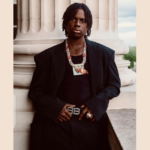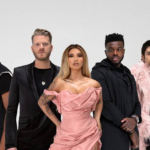Every few years, a new platform changes how we discover music. For instance, in the 2000s it was MySpace that was trending then. Later on, streaming services like Spotify and Apple Music showed up, and now, TikTok is here. In the United States, TikTok has become one of the most powerful engines creating chart-topping musical hits. Indeed, creating TikTok videos can make an artist popular in just few hours. But how exactly does a short-video app turn songs into blockbusters? Let’s unravel the trends, the strategies, and the impact behind how TikTok videos are driving music hits in the US.
The Rise of TikTok Videos as a Music Discovery Machine
TikTok users in the US are twice likely to discover new music on short-form video (SFV) platforms than the average user of other social apps. TikTok isn’t just a place to watch funny videos, dance challenges or intelligent animals. Interestingly, according to TikTok’s Music Impact Report (commissioned with Luminate), that discovery drives behavior. This shows that people don’t just hear a song; they stream it, share it, and add it to playlists. In additional, they also attend shows or buy merchandise. The same report noted that 62% of TikTok users in the US pay for a music streaming service, compared to about 43% of consumers overall.
In short, TikTok videos serve as a front door: for many listeners, their music recommendation comes from scrolling, watching, and engaging—rather than radio or traditional media.
How Songs Go Viral: The Algorithm & Trends of TikTok Videos
- Algorithmic Amplification
One of TikTok’s biggest strengths is its algorithm. The For You Page (FYP) doesn’t care whether you have thousands of followers or just a few – it cares about engagement. Indeed, it measures how people interact with content (likes, comments, shares, completion of the video), and whether they keep watching. Absolutely, these analytics trigger the algorithm of TikTok videos. If a clip (or audio snippet) starts to gain traction, it can be pushed to massive audiences very fast.
Indeed, this levels the playing field for content creators. For instance, an independent artist or a relatively unknown producer might see their 15-second sound clip used in thousands of videos, which can translate into real streams and charting potential.
- Trends, Challenges, and Remixes
Another important driver is the culture of remixing, challenges, and memes. Interestingly, a song becomes part of a dance challenge or meme or is remixed (sped-up version, slowed down, mash up) – obviously, these formats make it more shareable and repeatable.
For instance, sped-up versions of songs have surged in popularity on TikTok videos. In 2023, some of the top trending songs in the US were sped-up versions of older tracks.
- Emotional Connection & User Participation
Songs that connect emotionally, such as funny, nostalgic, romantic, or sad often spread because users can relate, remix, or build content around them. Indeed, a user sees others using a track for a particular kind of video (loving scenes, heartbreak, comedy), and then participates. That user participation feeds into algorithmic signals, which push the song further.

Case Studies: Songs & Artists Propelled by TikTok Videos
Let’s see a few examples of how this works in practice:
“Bad Habit” by Steve Lacy became a massive hit after going viral on TikTok videos. Impressively, the song was used by creators in many TikTok videos. Moreover, fans made sped-up versions which got traction, prompting planned releases to capitalize on the demand.
“Lottery (Renegade)” by K Camp wasn’t originally a mainstream radio banger, but the Renegade dance challenge made it a viral phenomenon on TikTok, leading to millions of videos using the sound.
Older or less known tracks get revived: TikTok videos give older songs “second lives” when a clip from decades ago becomes a perfect fit for a trend or meme. Indeed, this helps both new artists and classic catalogues.
Why the Influence of TikTok videos show up in US Charts & Streaming
It’s one thing for a song to go viral on TikTok; it’s another for that virality to translate into chart success or streaming numbers. But these are tightly connected now.
Bridging Discovery & Streaming: TikTok now allows users to save songs discovered in videos directly to music apps (Spotify, Apple Music, SoundCloud) through integrated features. That means the jump from “heard on TikTok” to “stream fully” is shorter.
Labels & Marketing Strategies Lean In: Record labels have adjusted. They create snippets of songs deliberately built to be catchy in a short format (hook, drop, or beat that works in 15 seconds). They plan releases with TikTok in mind. Paying influencers or creators, pushing challenges, etc., have become part of the “go-viral” plan.
User Engagement Means Dollars: The TikTok report found that in the US, TikTok users are more likely to also purchase merch, attend live concerts, and generally spend more in music-related categories compared to average listeners.
Challenges & Limitations
Truly, there’s no guarantee that going viral on TikTok will make a song a hit in every sense. Chart topping hits, sustained streaming, radio play, and more income may not be guaranteed by just TikTok videos. Here are some reasons why:
Virality is unpredictable. You can try everything right – have a catchy hook, seek out influencers, release remixes – but sometimes a song just doesn’t catch on. The algorithm is powerful, but chaotic.
Short format doesn’t equate full song loyalty. People might stream the 15-second version or use a snippet in a video, but not always listen to the full track or become long-term fans. Moreover, that’s a gap artists and labels aim to bridge.
Oversaturation & trend fatigue. When too many songs are chasing virality, users and creators can get tired of similar sounds or challenges. Besides, what’s trending today may be old news tomorrow.
Fair compensation & rights issues. As music is spread across many short clips and used in user-generated content, issues of licensing, royalties, credits, and fair pay come into play.
Effective ways to use TikTok videos as an Artist or Record a Label
If you’re an artist (or thinking of being one), or you work in the music business, here are a few take aways:
Think snackable: craft songs (or promotional snippets) that are catchy in a short time span.
Build around community & user participation: trends often start organically with creators. Encourage fans to make content.
Leverage platform integration: make it easy for your TikTok audience to stream or buy your music.
Adapt marketing strategies: collaborating with influencers, creating challenges, evolving remixes. Every new format can be an opportunity.
Preserve authenticity: Many TikTok users can spot when a song is “pushed” too heavily. Genuine emotion, relatable stories often win.
The Bigger Picture & Long-Term Impact of TikTok Videos
TikTok is reshaping how we define a “hit.” In the US music industry:
Songs that go viral on TikTok are increasingly likely to chart on Billboard, get certified gold/platinum, or be adopted by radio.
Older catalogues are benefiting: songs from decades ago are rising again, often introduced to younger listeners via TikTok videos.
The music business is valuing short-form video strategies as part of core release plans—not just extras.
Data and analytics from TikTok videos are now a key part of music-industry decision making: measuring which songs are trending, which snippets are used the most, which demographics are engaging.
Conclusion
Interestingly, the use of TikTok videos has become a central force in how music becomes popular in the US. Indeed, it has transformed the path from song release to hit song. Impressively, TikTok utilizes its algorithm, trends, challenges, remixes, and the connection between discovery and streaming.
For artists, labels, and fans: the rise of TikTok means that being heard isn’t just about radio spins or billboard placements anymore. It’s about whether a song can move people in 15 seconds, spark participation, and ride the waves of trends – while still being authentic.
Moreover, if you’re following the US music scene, you can’t ignore the potency of TikTok videos. It’s not just creating hits – it’s redefining what a hit is.




